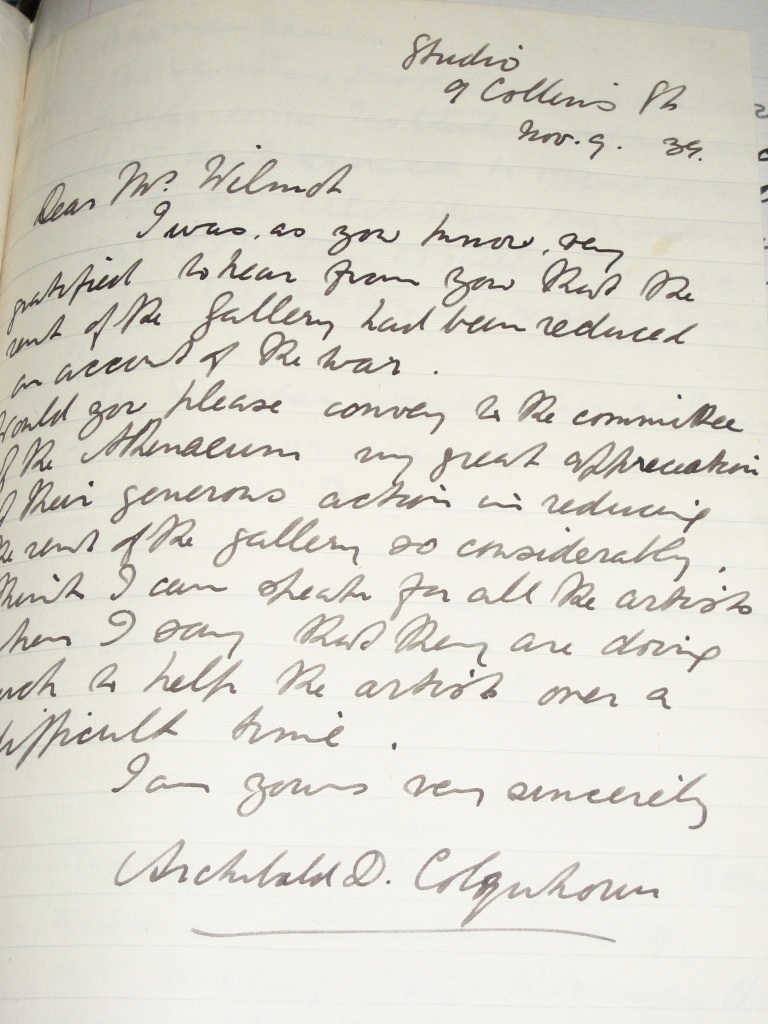The Melbourne Athenaeum Library will be closed on Tuesday November 4 for the Melbourne Cup public holiday.
The library will be open regular hours on Monday November 3.
Despite the Depression in 1931 the art gallery maintained its popularity. The 1930s were defined by a younger generation of painters receiving patronage and acclaim.
In 1937 Arthur Streeton was knighted, which led to great critical acclaim and success. His enduring role with the gallery further increased exhibitions and interest in the work of fellow Australian artists.
The Athenaeum Library continued to serve as a useful and engaging resource, which sought to complement the exhibitions by providing an in-depth art section.
The art gallery was committed to supporting the community, as evidenced by its role in charity events such as the Bush Fire Relief Fund. For this fund, the committee allowed free use of the art gallery, paying incidental expenses and raising about 713 pounds.
The range and depth of exhibitions at this time engaged the community and reflected the innovation and influence of early-twentieth century Australian art, such as the Heidelberg School.
The art gallery hosted events from a spectrum of artistic merit. During Australian Book Week in May 1939 the committee granted the use of its board room for a display of Australiana organised by the Bread and Cheese Club. This included a collection of original manuscripts and first editions. Later the same year, the Bread and Cheese Club returned the favour by exhibiting a collection of photographs of Australian authors in the Library. Throughout the 1940s some lectures were held in the library instead of the art gallery.
During the Second World War the committee reduced the gallery rent by thirty-three percent and patronage did not waver.

The gallery served its own role during war time as it became a means to boost the morale of soldiers at the front and to unify the community in a common need for artistic expression. An exhibition was held to aid the War Savings Funds for which the Committee of Management allowed the art gallery to be used free of charge.

The art gallery was not immune to the impact of the war. As part of the air raid precautions, the lantern lights were blacked out and electric light became the alternative. As a result, the light was severely diminished, however the artists and the public were accepting of the change. In response to the diminished light, at the suggestion of the Vice president Mr Grut and assisted by illuminating engineer Mr G.W. Mansell (Electrical Department Division of the State Electricity Commission), new lighting was installed. The new lighting scheme was installed by the Wilkins Electrical Co. and completed by Mr Newey. As before, the architects involved were Sydney Smith and Ogg and Serpell.
The gallery was greatly improved and Sir Arthur Streeton was the first artist to exhibit under the new lights.
As the war came to an end, the Athenaeum Art Gallery resumed its commitment to supporting national artists. Exhibitions featured new and returning artists such as Edwin Pareroultja, who sold all of his pictures in 1946 in a matter of days.
In the following years the gallery morphed, not only physically but also in terms of infrastructure. In 1949 renovations and changes to lighting were considered and opinions sought from contributing artists. A new direction was forwarded by Mr W.G. Manson of the State Electricity Commission, Mr Daryl Lindsay (Director of the National Gallery), and Mr J.S. MacDonald (former Director of the National Gallery).
The gallery also held exhibitions not related to art. These included chess tournaments and choral society performances.